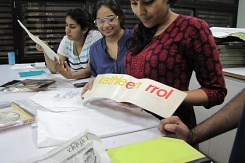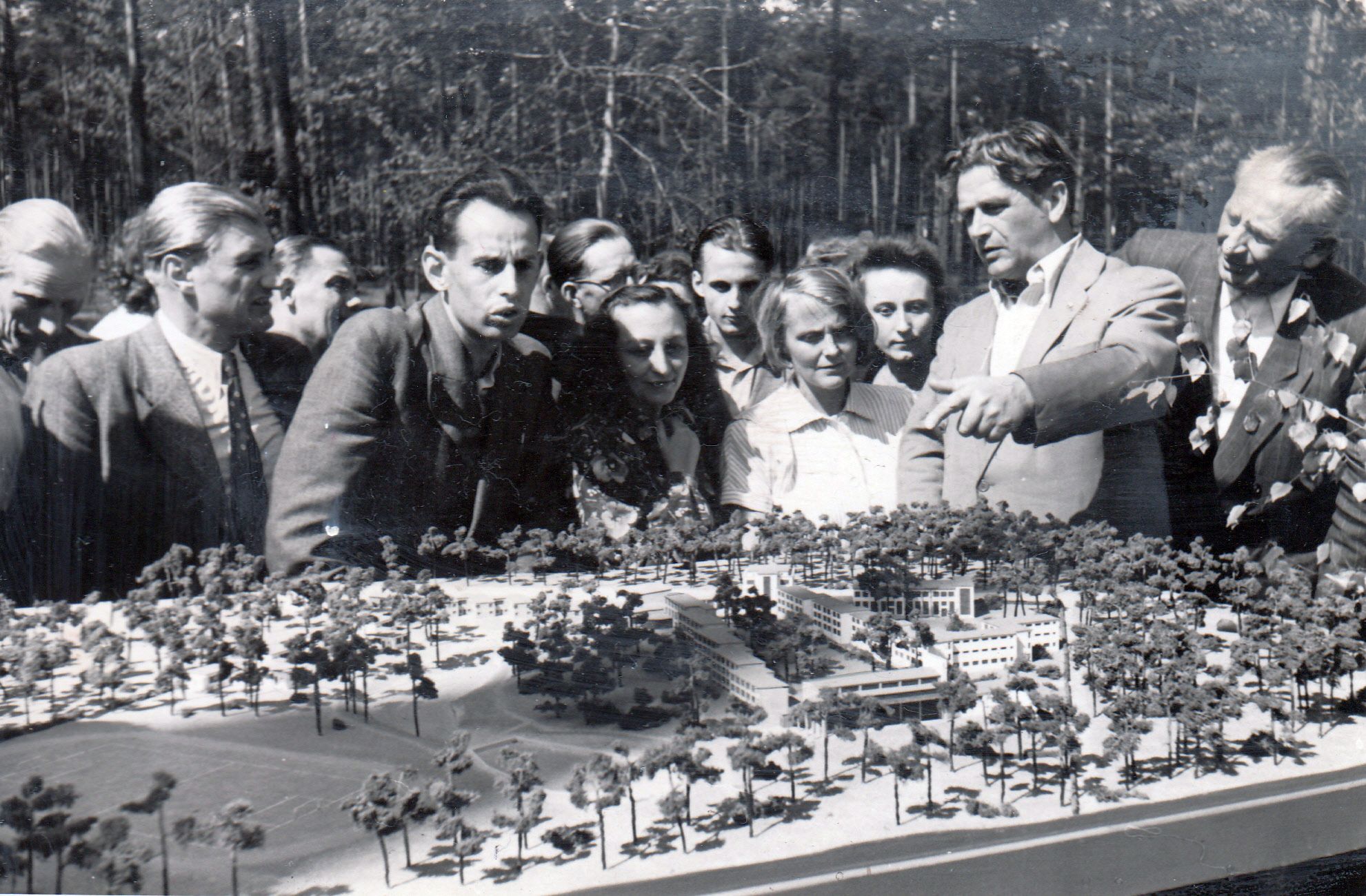Bereits im Vorfeld der Delegiertenversammlung (CIRPAC) des Internationalen Kongresses für Moderne Architektur (CIAM) in Barcelona (29. bis 31. März 1932) traf Le Corbusier, der am Wettbewerb teilgenommen hatte, am 5. März in Genf mit dem ehemaligen Volkskommissar für Bildung, Anatolij Lunačarskij, zusammen und äußerte seine Empörung in einem Brief an ihn vom 13. März erneut. Die CIRPAC-Versammlung in Barcelona stimmte dann dafür, „entschieden gegen diese Entscheidung des Wettbewerbs Stellung zu beziehen und die zuständigen Behörden in Sowjetrußland auf die begangenen Fehler aufmerksam zu machen“. Man zog sogar in Betracht, die Einladung Moskaus zum 4. CIAM-Kongress abzulehnen. Schließlich schickten Präsident, Vizepräsident und Generalsekretär der CIAM gemeinsam am 20. April ein Protestschreiben an Stalin: „Der Sowjetpalast, welcher der modernen Welt als spirituelle Krönung des immensen rationellen Werks des Fünfjahresplans präsentiert wurde, wird die Unterwerfung der modernen Techniken unter die reaktionären geistigen Kräfte inszenieren: Der Sowjetpalast wird in der Form, die ihm das Komitee anscheinend geben will, die alten Regime verkörpern und die totale Verachtung für die gigantische kulturelle Anstrengung der Moderne demonstrieren. Was für ein dramatischer Verrat!“ Iofans Entwurf drücke „auf bürgerlichste Weise das akademischste Denken“ aus, der von Žoltovskij sei „eine Kopie der italienischen Renaissance“, die Form der Architektur stelle sich „den Volksmassen die ererbte Macht der feudalen Herrscher gegenüber, die unbestreitbare Perfektion dieser architektonischen Formen kann selbstverständlich nicht beanspruchen, den zeitgenössischen Bedürfnissen und Problemen Genüge zu tun, deren Lösung nur mit der Anwendung der Errungenschaften der modernen Technik möglich ist.“ Und Hamiltons Entwurf sei „nur eine großspurige Übertragung pompöser Verfahren aus der Epoche der Monarchien unter einem modernen Deckmantel“.
Als sich herausstellte, dass der Entwurf des in New York ansässigen Architekten Hamilton realisiert werden sollte, da er nach Moskau eingeladen worden war, wurde am 28. April 1932 ein zweiter Brief an Stalin geschickt, begleitet von einer Collage mit der Aufschrift: „Der Entwurf von Herrn Hamilton, einem Trust-Palast, einer Kirche am Hohenzollernplatz von Berlin und Kaufhäusern in pseudogotischer Aufmachung gegenübergestellt.“. Die gezeigten Beispiele stammen aus Berlin (Karstadt-Kaufhaus am Hermannplatz, 1927–1929, Architekt Philipp Schaefer; Kirche am Hohenzollernplatz, 1930–1933, Architekt Ossip Klarwein). In Moskau jedoch entschied man, das Wettbewerbsverfahren fortzusetzen. Hamilton und andere ausländische Beiträge spielten von da an keine Rolle mehr. Der überarbeitete Entwurf von Iofan wurde 1934 zur Realisierung ausgewählt, aber nie gebaut.
Der Protest der CIAM gegen das Ergebnis des Wettbewerbs für den Palast der Sowjets war einer der Gründe, die zur späteren Absage des 1933 in Moskau geplanten 4. CIAM Kongresses führten. Stattdessen wurde der Kongress nach Griechenland verlegt und ging als „Athener Kongress“ in die Geschichte des Städtebaus ein. Die CIAM-Führung mit Gropius, Sigfried Giedion und Le Corbusier hatten Warschau, Mailand und Algier kurz als alternative Kongressorte erkundet. Als ob die modernistische Avantgarde keine Heimat gehabt hätte, beschlossen sie schließlich, ihre Grundsätze auf dem Passagierschiff Patris II auf dem Weg von Marseille nach Athen zu diskutieren. Zu Füßen der beleuchteten Akropolis fand in der Technischen Universität die Eröffnung der Ausstellung Die funktionale Stadt statt. Auf der Rückreise wurden Arbeitstreffen mit Vorträgen und Diskussionen zur Stadtanalyse abgehalten, die Gruppen aus verschiedenen Ländern vorbereitet hatten. Zehn Jahre nachdem die Mitglieder des 4. CIAM-Kongresses unter dem Thema „Die funktionale Stadt“ die Grundlagen und Richtlinien für Neubauten formuliert hatten, veröffentlichte Le Corbusier diese Ideen zur Stadtplanung in der einflussreichen Publikation „Charta von Athen“ (1943).























.jpg?w=245&h=163&c=1)








.jpg?w=245&h=163&c=1)












